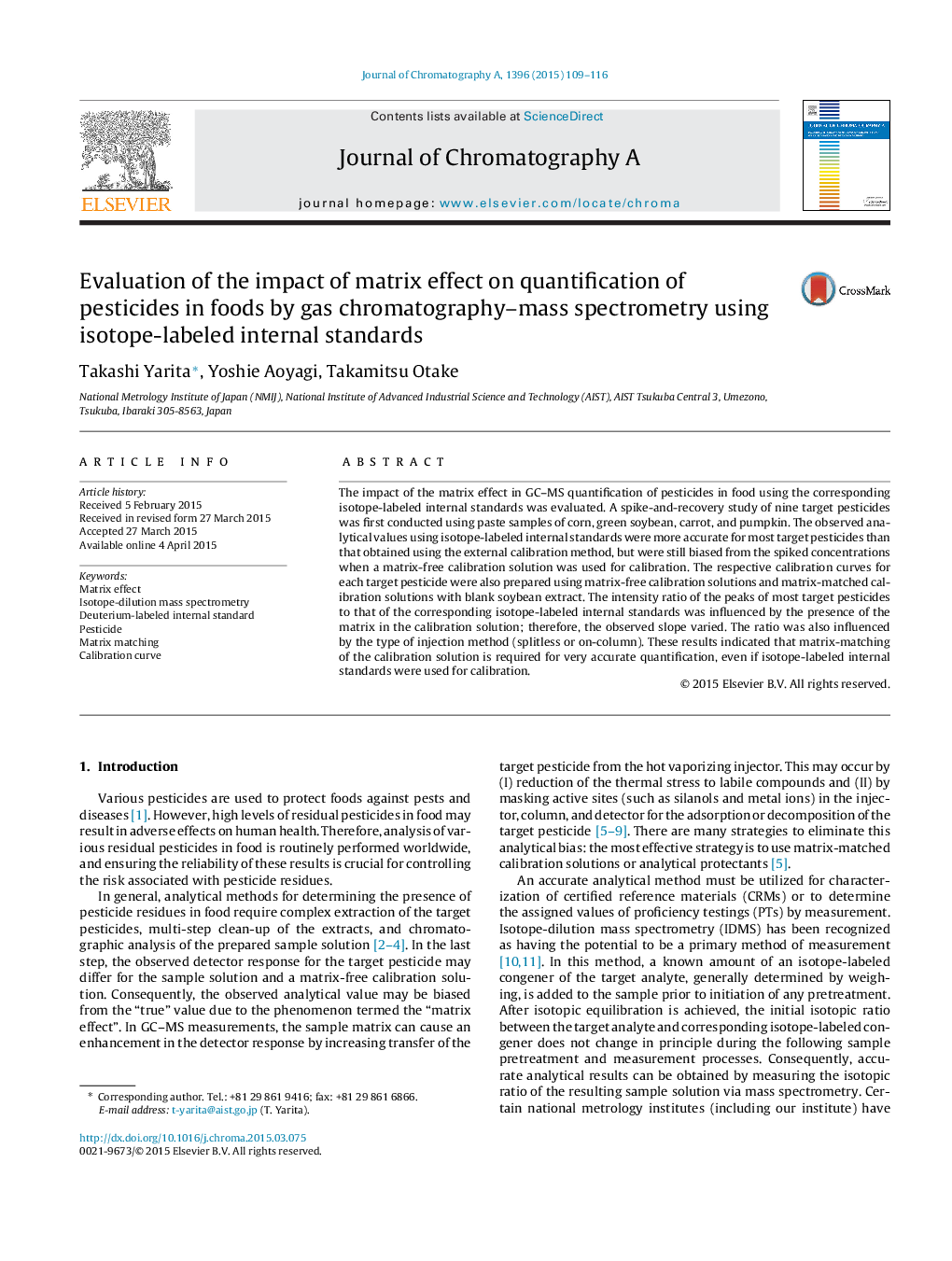| Article ID | Journal | Published Year | Pages | File Type |
|---|---|---|---|---|
| 1199471 | Journal of Chromatography A | 2015 | 8 Pages |
•Matrix effect in GC–MS evaluated using isotope-labeled internal standards.•Matrix-free calibration solution results were biased from spiked concentrations.•Calibration curve slope was influenced by the matrix in calibration solution.•Matrix-matching was required for very accurate quantification, even with isotope-labeled internal standards.
The impact of the matrix effect in GC–MS quantification of pesticides in food using the corresponding isotope-labeled internal standards was evaluated. A spike-and-recovery study of nine target pesticides was first conducted using paste samples of corn, green soybean, carrot, and pumpkin. The observed analytical values using isotope-labeled internal standards were more accurate for most target pesticides than that obtained using the external calibration method, but were still biased from the spiked concentrations when a matrix-free calibration solution was used for calibration. The respective calibration curves for each target pesticide were also prepared using matrix-free calibration solutions and matrix-matched calibration solutions with blank soybean extract. The intensity ratio of the peaks of most target pesticides to that of the corresponding isotope-labeled internal standards was influenced by the presence of the matrix in the calibration solution; therefore, the observed slope varied. The ratio was also influenced by the type of injection method (splitless or on-column). These results indicated that matrix-matching of the calibration solution is required for very accurate quantification, even if isotope-labeled internal standards were used for calibration.
